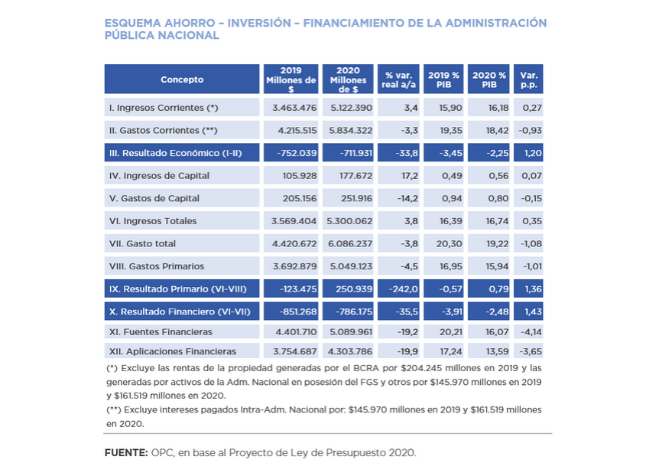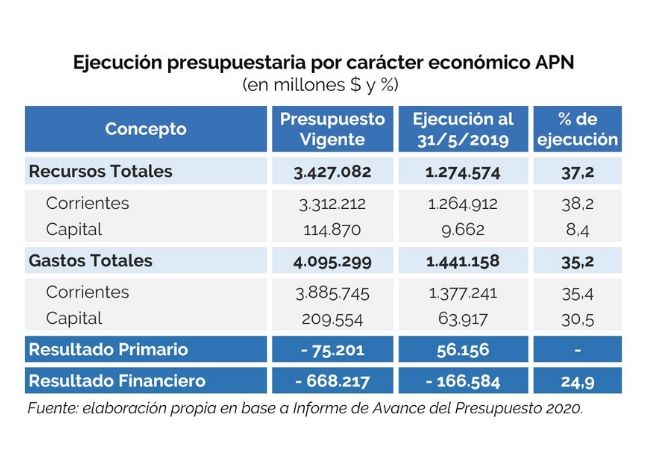
Description of 2020 Budget Bill contents
The purpose of this report is to provide a comprehensive description of the basic content of the National Government Budget Bill for 2020, submitted by the National Executive Power in mid-September.
The existing economic and financial volatility, the pending implementation of the agreement with the IMF and the need for a public debt rescheduling process, have determined important adjustments in the macroeconomic projections made. In addition, the outcome of the election process that led to a change of political authorities as of December 10 and, therefore, a very likely change of priorities in the allocation of public resources, are issues that relativize the analysis made in this report. However, it is essential to carry it out, since it will be very useful to understand the constraints in the national budget caused by previously adopted regulations, as well as to provide elements of judgment in the process of discussion and legislative approval.

